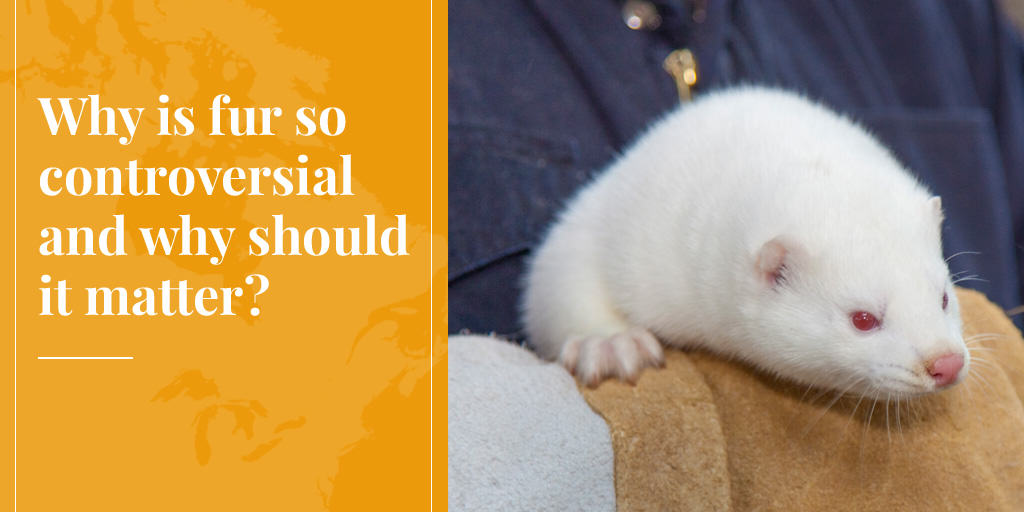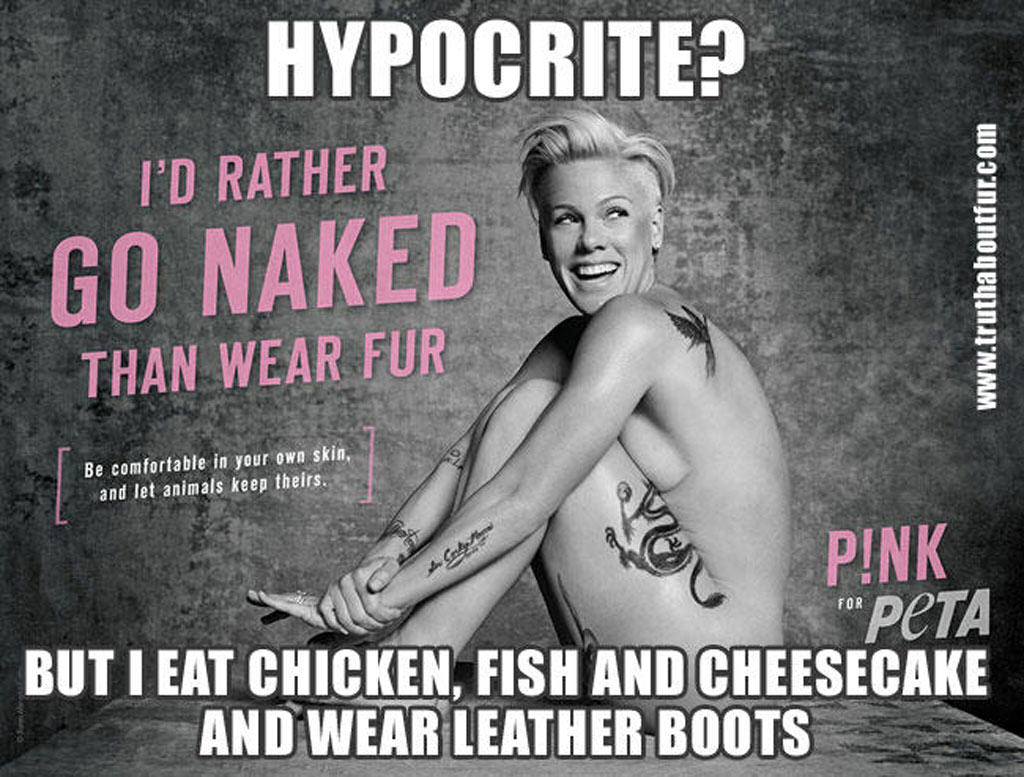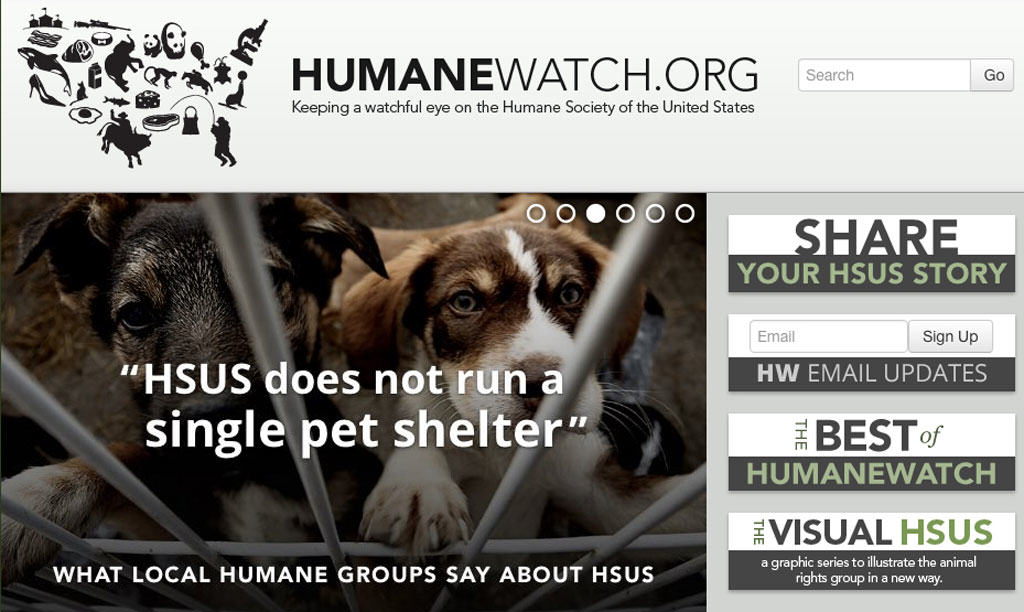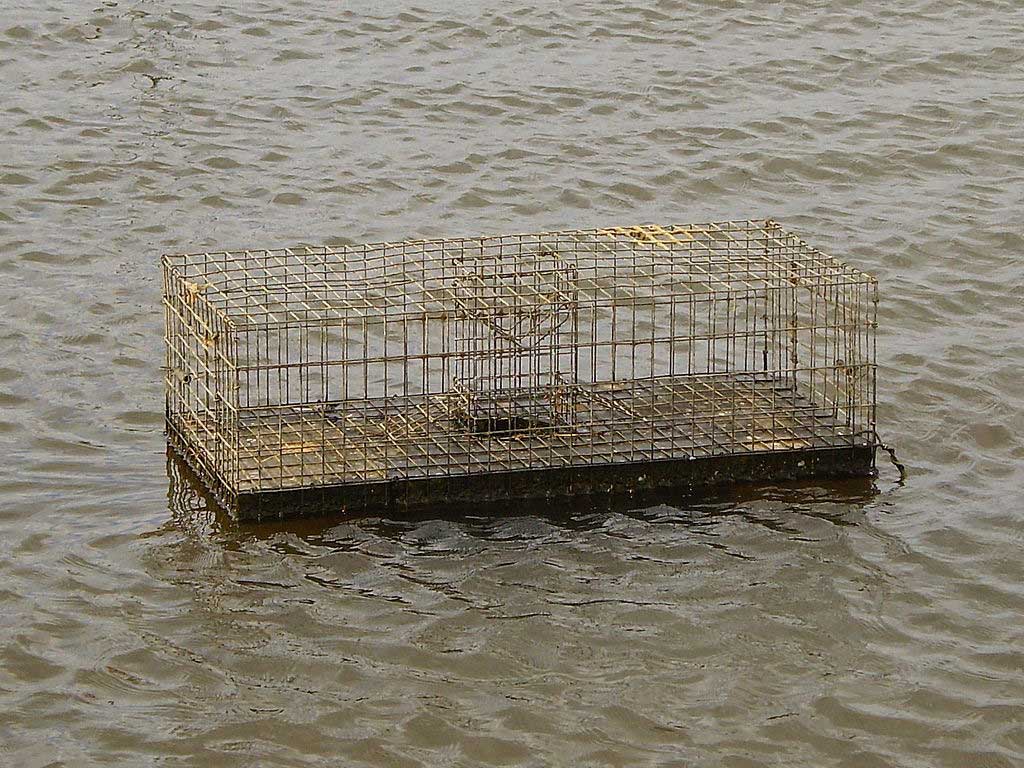
With fur now so prominent on the designer catwalks, in fashion magazines, and on the street, many publications are hosting debates about the ethics of wearing this noble but much-maligned material. Among all the arguments, for and against, one question is never asked: “Why is fur so controversial?”
True, animals are killed for fur. But more animals are killed for food every day in North America than are used for fur in a year!
But we don’t need fur, you say? Well, PETA and their friends argue that we don’t need to eat meat either.
The real reasons why fur is “controversial” may surprise you.
Let’s take a look …
10 Top Reasons Why Fur Is “Controversial”
#1. The Fur Debate Is “Class War”: According to “animal-rights” philosophers, eating meat is no more justified than wearing fur. Even Peter Singer – whose book Animal Liberation launched the modern animal-rights movement – wrote that it is hypocritical to protest against the fur trade while most people eat animals daily. In practice, however, fur is an easy target because relatively few people wear it – and most of them are women. And fur apparel is expensive (because much of the work is done by hand) making it easy to dismiss as an “unnecessary luxury”.
Fur is a convenient cross-over issue for those who decry “capitalist exploitation” of both humans and animals. Thus, the “A” in “ALF” (Animal Liberation Front) is often circled – the graffiti code for “Anarchy” – and it is usually left-wing parties in Europe that endorse anti-fur positions.
The fact that those hurt by anti-fur campaigning are working people – aboriginal and other trappers, farm families, craftspeople – is something these “idealists” prefer to ignore. This is why PETA is so upset by the growing popularity of fur for small accessories or trim on parkas: this trend is making fur much more widely accessible, especially for young people.

#2. Fur as Scapegoat: We are bombarded with warnings that human activities are changing our climate, polluting the environment, destroying rainforests and driving record numbers of species into extinction.
These problems are complicated and solving them will require major changes in our lifestyles. So it may seem reasonable to claim that “if we care about nature, at least we should stop killing animals for frivolous products like fur!”
In fact, the trapping of wild furbearers is strictly regulated by state and provincial wildlife agencies to ensure that we use only a small part of the surplus nature produces each year. Endangered species are never used.
The modern fur trade is an excellent example of “the sustainable and responsible use of renewable natural resources”, a key ecological concept supported by all serious conservation authorities (International Union for Conservation of Nature, WWF, UNEP). Using renewable resources, like fur, is ecologically preferable to using synthetics derived from (non-renewable) petro-chemicals. And giving commercial value to wildlife provides a financial incentive to protect natural habitat, which is vital for the survival of wild species.
But why let facts get in the way of a good story?!
#3. “Media Sluts!” Speaking of stories, PETA co-founder and president Ingrid Newkirk explains its success in using the media to promote its issues (and brand!) as follows: “We’re media sluts … we didn’t create the rules, we just learned how to play the game!”
PETA understands that media can’t resist running a photo feature about a starlet, supermodel or other “celebrity” – especially if they are female and undressed. So what if these women know nothing about conservation or wildlife biology, “the medium is the message”. Of course, getting on the evening news does not pay the bills. That’s where modern fund-raising technology comes in. (See #4)

#4. Follow the Money! Many people don’t realize that campaigning against fur and other animal-based industries has become a very lucrative business. PETA and its affiliates rake in some $30 million annually; the so-called Humane Society of the United States (HSUS) collects more than $100 million. HSUS execs pull down six-figure salaries. And there are dozens of other groups.
Very little of this money goes to animal shelters; most is churned back into driving more “issues” and fund-raising campaigns.
PETA alone has more than 100 employees writing letters to editors and planning photo ops. The media stunts are quickly followed up with direct-mail, fund-raising appeals: “Please help us to stop this atrocious suffering!”
Computer technology allows this thriving new protest industry to target zip codes most likely to contribute. The money collected far exceeds what the fur trade – an artisanal industry comprised of thousands of small-scale, independent producers – can devote to telling their side of the story. So the activist message is most often heard – creating the impression that “there must be something wrong with the fur trade!”
As a leading animal activist once told me: “You can’t win because you have to spend money to fight us, but we make our money attacking you!”

#5. Fur as Political Football: Lobbying to ban the production or sale of fur is emerging as a favorite activist tactic – especially because they don’t even have to win for it to work!
Political campaigns transform the parochial views of special interest groups into “hard news”. Well-informed journalists may resist providing free publicity for PETA’s street theater, but they cannot easily ignore a political campaign. And legislative bans carry a deeper message: if governments are prepared to shut down a tax-paying business, surely this must be a very evil industry indeed!
In fact, the real message of politics is … politics.
Political attacks on the fur trade generally succeed only at the municipal level (an incestuous world where very few councillors make the decisions), or in countries with proportional representation. In these countries (including most of Europe), there are so many parties that complex coalitions are needed to cobble together a majority. Mink farmers (or seal hunters) wield limited economic clout – and fewer votes – making them ideal sacrificial lambs to bring left-wing or “green” partners into government coalitions.
Meanwhile, European governments now pay trappers to kill muskrats, (to protect dykes and farmland in Belgium and the Netherlands), or badgers (in Britain, to control bovine tuberculosis) – and destroy the furs. And while the EU banned the import of sealskins, fishermen there can shoot seals to protect their nets, without regulations or oversight, so long as they don’t sell the pelts!
Another revealing example is Israel, where a few members of the Knesset are hoping to ban all fur sales. Because there is almost no fur trade in Israel, it is very tempting for the government to yield to such pressures; there is no domestic downside. A fur ban in Israel would change almost nothing in that country, but activists hope to use it as a precedent for similar initiatives in Europe and North America – a rare example of “progressive” groups citing Israel as an ethical leader!

#6. Nature as Disneyland: Not so long ago, most North Americans still had family on the land. Summers might include visits with grandparents or other relatives on the farm – people who understood that nature is not Disneyland and animals are not talking cartoon characters.
Today, for the first time in human history, most of us live in cities. We have little direct contact with (living) animals that are not pets. We do not know that taking some animals each year may be the best way to keep the rest of the population stable and healthy. Or that wildlife must be controlled to protect property and habitat (e.g., from beaver flooding), to protect nesting birds and their eggs from predators (coyotes, foxes), to prevent the spread of dangerous diseases (e.g., rabies in raccoons, skunks), and for many other reasons.
When our meat comes in Styrofoam trays in the supermarket, we are easily shocked by images of animal slaughter for any purpose. Animal activists complain that industrial/urbanized society has lost respect for nature and animals – but, ironically, their campaigns attack the livelihoods and cultures of the few people who still live close to the land.
#7. Harassment of Women: We are rightfully disgusted when women are attacked in some countries for wearing their skirts too short or not covering their heads. Animal activists, however, have little to learn from religious extremists when it comes to harassing women.
Some notable anti-fur slogans have included: “It Takes 40 Dumb Animals to Make a Fur Coat, But Only One to Wear It!” and “Shame!”, an HSUS campaign showing a woman in fur hiding her face with her handbag. The goal is clearly to intimidate women, to make them feel uncomfortable wearing fur.
One wonders, would anti-fur campaigning have become so aggressive if men wore most of the fur coats? Perhaps PETA would show more moral conviction if they demonstrated against the use of leather by motorcycle gangs!

#8. Politically-Correct Bullies: “If you don’t remove fur from your store, we will picket every day before Christmas with a large-screen TV showing animals being skinned alive!”
When fur represents only a small proportion of their sales, fashion retailers cannot easily resist this sort of threat, even if fur is perfectly legal and their customers want to buy it. Those who persist may find their locks glued or windows broken. Or their homes may be splattered with red paint, their neighborhoods plastered with posters denouncing them as “murderers”. Security costs soon outweigh potential profits – or principles about freedom of choice.
When the mafia targets businesses in this way, it’s called a protection racket. When foreigners use threats of violence to make us do what they want, it’s called terrorism. But retailers targeted by animal activists are on their own; their tormenters are called “idealists”. And if the retailer decides to buy peace, their decision to drop fur is trumpeted by the bullies as a “moral victory” – and more proof that fur is “controversial”.
#9. Seeing Is Believing! Nothing has done more to fuel the fur “controversy” than a number of shocking videos posted on the web. These videos show animals in very bad condition on fur farms and even, in one particularly horrific example, an Asiatic raccoon being skinned while clearly still conscious, in a dusty village square somewhere in China.
Pictures are worth a thousand words and videos don’t lie … or do they?
The injured animals shown in one “US fox farm” video were actually being kept for urine, to produce hunting lures. The farm never sold fur – fur from such poorly cared-for animals would have little or no value – and was later forced to clean up its act by the Illinois Department of Natural Resources. (The video mentions none of this.)
The Asiatic raccoon-skinning video is particularly upsetting, and especially dubious. No one would skin an animal alive. Morality aside, a conscious animal moves, increasing the risk of damaging the fur or cutting the operator. And with the heart still beating, an animal bleeds more, unnecessarily soiling the fur.
The only logical conclusion, shocking as this may be, is that someone paid a poor villager to do this terrible act for the camera.
When this video was first released by a Swiss animal rights group, in 2005, the International Fur Federation requested the full, uncut tape, with information about when and where it was filmed, so an investigation could be launched. There was no response – a strange reaction from a group supposedly concerned about animal welfare. Unless, of course, the real goal was to fuel controversy!
SEE ALSO: 5 REASONS WHY IT’S RIDICULOUS TO CLAIM ANIMALS ARE SKINNED ALIVE
#10. A Culture in Search of Values: Above all, the controversy sparked by fur reflects a confusion of values in our fast-changing society.
Wherever they were from, our grandparents lived in cultures with very clear ideas about what we should eat or wear, how we should speak or act. Urbanization, globalization, secularism and multi-culturalism have changed all that. It is no longer always clear what is right or wrong.
Without a social consensus, we live in constant doubt; sects flourish, politics become increasingly polarized, conspiracy theories abound. A simple trip to the grocery store becomes an existential experience: Should we eat meat? Is it better to buy organic or locally-produced food? What about low salt, high carbs, GMOs?
In this cloud of nutritional, ecological and ethical confusion, fur can become a flashpoint for the clash of urban and rural cultures, for troubling questions about our relationship with nature and animals, and, not least important, for the tension between collective values and individual freedom of choice.

Final Word – Fur Leaves No One Indifferent!
Fur means different things in different cultures. Aboriginal people believed they could partake of animal power by wearing fur and that using these “gifts” showed respect for the animals that gave themselves so that humans might survive. (Much like many of us still say grace before meals.) Furs have also often conveyed status and power: furs adorn ceremonial robes and, in the Middle Ages, strict laws determined which furs might be worn by different classes. Ultra-Orthodox Jews wear fur-trimmed hats (streimels) on the Sabbath, to spiritually elevate both man and animal.
In the golden years of Hollywood, furs represented luxury and sensuality – as they still do for many. Today, animal activists would like to associate the wearing of fur with human arrogance and guilt, even as a new generation of designers rediscovers its natural beauty and makes fur more versatile and accessible than ever before. While some now denounce the fur trade as a crime against nature, others argue quite the contrary, i.e., that wearing and admiring fur can remind modern city dwellers that we are, ultimately, dependent on nature for our survival.
And this, perhaps, is the true nut of the fur debate: are humans “a rogue species”, “a cancer on the planet” that would be better eliminated, as some “deep ecologists” and the “voluntary human extinction movement” would have us believe? Or are we truly part of nature, a natural predator with as much right to be here as any other species (although with greater responsibilities, because of our unprecedented power and knowledge)?
Fur, in summary, has always been more than a beautiful, natural material. Fur has always had symbolic meaning, a powerful hold on the human imagination. The current “controversy” about fur is just the latest example of the on-going attraction of the most precious of natural clothing materials.











I can’t get past the fur farms. Really? Those types of “farms” should be shut down, and the workers should find better jobs. They don’t contribute to conservation, or the world’s food supply. How many people eat farm raised mink burgers? It’s completely unnecessary, has nothing to do with aboriginal or traditional values, and there is a plethora of moral problems associated with such places. Bile Bear farms (albeit in China) are another example. Look that one up. Do some research. If you think that is a good use of animals, you are not a good person. Nothing can justify it. There is a long list of similar examples of things that people do with animals. Now the Coronavirus (2020) is spreading across the globe, as other animal diseases have done, because of wildlife trade, legal and illegal. It’s a dirty business. There is just too much wrong with using animal products. Trapping wild animals is probably the least of the world’s problems, but it’s not exactly above reproach either. So, I can see where groups like PETA should have a seat at the table. For sure.
You raise a lot of points there, Adam, and the pro and con arguments are often not straightforward, so I’ll just pick one. You state that fur farms don’t “contribute to conservation”, but actually they do. It’s not intentional, of course, but the fact is that the rise of fur farming since WWII has has removed what was unsustainable pressure on many wildlife populations. Farmed mink fur, in particular, now meets the bulk of demand for fur, as a result of which demand for wild fur has fallen, enabling wildlife managers to do their job properly. A clear-cut example is the chinchilla which, despite strict protections, continued to be taken from the wild until the middle of the last century. Without the advent of chinchilla farming, they might well have gone extinct in the wild. Meanwhile, leading conservation groups are increasingly becoming involved in the captive breeding of a variety of species to protect wild populations. For example, the IUCN is involved in the breeding of pythons to supply the exotic skin market.
I expected that reply, and yet you probably shouldn’t have, Those farms are not nice places, and they’re certainly not wild natural places. They’re as bad or worse than pig farms. Which is a shame. Wild pigs are clean and intelligent, but the farms where they live are disgusting, lights on all day, no green anywhere, a real horror show. Some worse than others. However, it can be argued (if not justified) that it’s necessary to supply food for millions of countrymen. Fur, on the other hand, is largely exported, and often not purchased for warmth or survival, by people who don’t know or care where it comes from. The “pressure” that you speak of should not exist. Instead of defending or perpetuating fur farms, it should fall out of fashion worldwide, with a fringe market for wild caught, for people living in Siberia and such. If you are a thoughtful human being, and you don’t have a vested interest in farming, you should agree. I doubt that fur is any more ecologically sound that polyester, all things considered.
Thank you!
I’ve been slowly triggered by irrelevant comments I see every time related to animal cruelty. This just build up nicely inside.
Dear animal lover,
You people are barking at the most obvious of obvious it become oblivious. If it’s not fur, we won’t be here since our ancestors won’t survive ice age. And considering history, ain’t it wasteful not to utilize every last bit of useful resource?
AT LEAST animal lives shorter lifespan than human. They regenerates faster. If it needed, we farm them (wool, not fur I guess?). If MORE needed, we could fabricated it (faux fur).
The professional were regulated by law. Weren’t the price tag naturally weeds out only those who are able to afford it? Let alone the general fur treatment that weeds out more people off. Stop looking at someone else’s grass. Don’t be easily controlled by media. Love yourself.
You should concern more about real ordinary people that do harm to animal. Your neighbor, coworker, security worker perhaps. Say you allergic (or hate) to cats and they want to protect you. You wouldn’t budge if the poor hungry stray cat was kicked. You wouldn’t budge to people catching stray cats to said animal center. Psychopath also said to once hurts animal during their childhood. In fact there’s a cat repellant spray product sold at my country. Said to repel cats from entering your house, peeing your property, shedding fur, etc. God knows what content it has. Pay close attention to this REAL animal CRUELTY. Could be done more humanely (animally?).
I’ve heard things about vegan, it has it’s positivity and negativity. Somehow those anti fur people remind me of the narcissist one of the group, whose pride hurt easier rather than really living its better side. Kale, chia, berries are good. What rack my mind most is how they casually use >50, hundred years wood, just for a furniture or kitchen tools. The quirkier, the more personal the design is, the more unlikely other people would buy and reuse it, once the owner outlive that furniture.
People can’t just plant tree closer to make more of it. You want qualities too. Poor people are using cheap recycled wood because that is what they can afford. Won’t your vegan plants require large amount land too?
Ah…Back to that wood user. Ain’t it was like killing your grandpa to use their kidney or heart for you? It’s better if their organ is THAT useful. Sometimes people is just after their money. Wait…That could be it.
And the world is not full of toxic waste, our oceans are not full of plastic, and Polar Bears are not on the brink of extinction due to the warming of our planet! Now if you believe all this…well I’m not sure what to tell you. I grew up on a farm, in a farming community, and while these animals had it much better than current farm animals, I can tell you that animals were not treated as anything other than the end result they represented! I feel sorry for all those people who so desperately want to believe every word you are spinning so they can get off this topic and stop picturing these poor ‘fur’ animals being skinned for, well their FUR!. The Seal Hunt that takes place in Newfoundland showed everyone just how frigging barbaric it was, how baby seals were indeed skinned alive because care was not taken to ensure the club that assaulted them did the job intended. You say blood would be a deterrent, I say, if the sealers could have blood soaked white baby seal skins, in their rush to kill as many baby seals as possible in the time they had allotted, then your argument falls short! EVERYONE who cares to KNOW, knows that the farm animals – cows, pigs, chickens – are abused and tormented while inspectors stand by idly by…videos have been shown on local news (which I KNOW for a fact have not been dubbed). So, while you try to use logic to disprove an industry full of abuse and neglect exists, maybe you should personally go undercover to to see if your ‘facts’ hold water. Further, you can’t use the fact that humans live off the meat of other animals to question their hypocrisy about being appalled that the Fur Industry continues in today’s society, the two are not even the SAME – animals are killed to ‘feed’ people vs. animals are killed to put expensive furs on a human! What human requires a fur when they live in a part of the country that never has snow or freezing temperatures! Isn’t that the killing of an animal for vanity reasons! I’m mean come on, if you don’t live in the part of the world that has up to -40 temperatures, WHAT THE HECK DO YOU NEED A FUR FOR!!! And look at how your ‘fur’ animals are housed and tell me that they are treated with the utmost respect. I’m sorry, you are simply trying to use words to appease people’s disgust over an industry that shouldn’t even exist today! One last thought – an awful lot of leather goods are made from cow hide these days, thus fully using a slaughtered animal. Just saying…
Hi Catherine, you raise many contentious issues, and our responses to the key ones are all on our website. Just a few nit-picking comments … (1) I presume by “white baby seal skins” you are referring to very young “whitecoat” harp seals. These have not been harvested for decades. (2) We don’t need to go “undercover” to see how the fur trade operates. We are participants in the trade, and unlike animal activists, have free access to every aspect of trapping and farming. Rest assured, the North American fur trade is acutely aware of the need to maintain the highest standards of animal welfare, not just because it is afraid of negative publicity but also because we are mindful of our ethical responsibility towards the animals in our care. (3) Yes, every part of a cow is used, but so is every part of a farmed mink, for example. It’s the nature of highly competitive modern livestock industries that producers must use as much of an animal as they can to stay economically competitive. Sheep are an interesting example. Sure, the primary product may be meat, but sheep fur is also important and helps keep the price of the meat down. (4) The latest scientific research seems to indicate that polar bear populations are increasing in number, and are not headed for extinction as activists claim, but that’s not our area of expertise so feel free to research it further.
Hey, I get it. You gotta live. The only reason I personally find animal products offensive (and I live on an active farm) is because it’s unbalanced. If someone wants to hunt a lion, do it with your bare hands. If you win, you get the fur!!! Also, I have pets I love that have feelings and the idea that lethal injections for dangerous humans are cruel but slaughtered animals used for fur or leather isn’t… well, its just anthropocentric and stupid.
You raise two debating points as old as the hills. Should a hunter, for example, play only on a level playing field with his/her prey? It’s a nice idea, but will never gain support. Here’s a quick anecdote. In northern Norway, fly fishermen are derided by commercial fishermen, especially if they release what they catch. “Why,” they ask, “would you make it intentionally difficult to catch a fish, and then release it when you catch it? If you’re hungry, just catch the danged thing. If you’re not hungry, leave them alone.”
As for anthropocentric behavior being “stupid”, well, every species does it. It seems to be a natural condition. Lions couldn’t care less if the wildebeest are hungry, and vice versa.
Bottom line is that innocent animals are tortured and murdered for YOUR vanity. Shame on you !!! You must have a black soul.
Hello from Spain. Very interesting article. I have good memories about my mum wearing fur and I by her side, she smelled so good and was so warm and soft. I am honestly tired about the same story about fur, and I think it can be resume by one only word: hipocresy. People staring in a bad way, people judging other people, while they use leather shoes, or leather jackets, or a leather bag, or eat chicken… While there are prisons in the world where prisoners eat the same roots soap for years and have no showers and sleep with rats and nobody cares. While there are wars and people killing other people, while we say to kill a baby in a mothers belly is a right…
I do think we have to care for a responsable use of natural resources, and ask for Stop animal suffering, but please, lets stop this hipocresy and false ecologism. People dont use mothers fur because of fears and people judgments,this is finishing with their freedom althoug they are not making any new consum, Just because it is not politicly correct, while using a cheap coat made in Asia or India by people in hard conditions and no laboral rights and high contamination is ok. Fed up with hipocresy
Is this a real argument you’re trying to make? Did you reread this and honestly believe everything you just claimed is true?
You made some really good points, some of which I fully agree with. However, your claim that, ” No one would skin an animal alive.” do you all really think that statements true? Thats like saying no one would light a living dog on fire, or tie a cat to the underside of a car so it’ll be dragged to its death. Which if you type even one of those into google, hundreds of results and news stories will pop up, none of which started by PETA.
There was a story published just this year in the Daily Mail UK on the barbarity of a Russian fur farm. The owner clearly stating, “I’ll tell you honestly, I have no sympathy towards the animals when they are about to be killed,’ said Ms Klitsova. ‘Perhaps it is my professional immunity. On the contrary, I feel deep satisfaction.” With an owner of a farm admitting this, do you really think these animals are being treated with the care and respect they deserve?
Second, the argument against meat, fur, and the like, are not just about getting rid of them entirely, but providing a better life for these animals in the farms, as well as creating a more ethical, humane way of slaughtering.
Think about it, if you get a piece of meat from an animal that has lived a happy, stress free life, in a clean environment, who hasnt been brutally injured or shot up with random hormones to make it grow faster, common sense would say that that piece of meat is going to taste better than one from an animal who’s constantly getting shot up with hormones, getting beaten, living in disgusting conditions, and overall just living a stressful, unhappy life. That same thing is going to hold true about the quality of the fur, leather, or even wool produced in fur farms.
Just because you say that “trapping of wild furbearers is strictly regulated by state and provincial wildlife agencies”, you think that every one of these trappers follows the rules? You think every farm follows the guidelines they’re supposed to?
As far as these videos go that get released, fake or not, there is truth that lies within them. If you honestly think the things that get shown in these videos, or captured in these images, are things that don’t ever, or would never happen, then that alone shows your ignorance and one side-ness to the topic.
Comparing animal abuse to skinning animals alive makes no sense, lighting a dog on fire is not part of an industry, skinning fur bearers are. No one would skin an animal alive because it would take too much time and it would be dangerous for the operator and the animal needs to be dead for at least 20 minutes before you can skin it effectively. For business reasons alone, skinning animals alive is simply not worth it and farms are businesses. Those videos you say aren’t linked to PETA were made by PETA, but they didn’t put their logo on it, for obvious reasons.
Think about it, if you get a piece of meat from an animal that has lived a happy, stress free life, in a clean environment, who hasnt been brutally injured or shot up with random hormones to make it grow faster, common sense would say that that piece of meat is going to taste better”
Same thing goes for the pelt of an animal that has been well treated. You basically hit the nail on the head here, treating animals better means they have nicer fur and will taste better, and that will mean more money for farmers, so that’s basically the premise of fur farming, even more so than with meat farming. You can treat a chicken like crap and still get a decent breast, but the fur is the first thing to go if an animal is mistreated, stressed, or malnourished.
Of course not every SINGLE trapper and farmer follows the rules, but the same can be said about politicians, business owners, essentially every single business in the world has people that break the rules. Does that mean those businesses should all be shut down?
Thanks for this. All the points are valid.
@KaD – I confess that back when I was a naive tween I was suckered in by the lies perpetrated by the AR movement. I have since learned the truth about these orgs and it’s disgusting how these people can torture animals for profit, yet call those who hunt, eat meat or wear leather/fur barbaric murderers.
I’ve only recently question my stance on fur and done the research for myself to come to a logic conclusion-that the claims of cruelty just don’t hold water and are fabricated by crazed activists who believe that pets are slaves and meat should be illegal.
Most people still don’t realize that PETA was convicted of paying people to skin animals alive for their shock videos (which generate millions in donations from gullible followers) by a German court: https://topcatsroar.wordpress.com/2013/10/19/animal-welfare-v-animal-rights-skinned-alive-is-a-myth/ Other animal rights organizations and individuals have also been convicted of this; as well as paying people to electrocute foxes, hack dolphins to pieces, and other acts of animal cruelty, torture and abuse. https://old.furcommission.com/news/newsC7.htm When you do the research and look into the claims of abuse by animal rights; they just don’t hold water.
Anglers fillet fish alive. They are proud of it. You can watch it on YouTube. If people do that with fish, they do it with other animals. PETA’s clams are legit. Of course, an organization like Truth About Fur would try to discredit them, or spin it to be a good thing.
What more is there to say other than, “very well written and researched!” thank you.
Very well written!
Congratulations on a well written article.
FINALLY!!! Someone put it all in writing in a respectable honest way. My family has been in the fur and shearling business for many years. We are proud of our trade and disgusted how misinformed people are. Millions of dollars are given to animal causes – millions of people are being scammed. PETA kills more animals than any other organization in the country. UGGS are shearlings. THEY ARE SHEEPSKIN and everyone is wearing them so all the Hippocrates out there.. GET INFOMRED before you run your mouth. If you don’t like fur, if you don’t like leather, if you don’t like shearling, don’t wear it. That is your choice, but DO NOT impede on my choice. Thanks for the great article. I will be forwarding it to everyone in my industry!
Peta and other groups are trying to control a difficult situation. Nearly all animal shelters in the states euthanize animals. The difference is, PETA “kills” pets, while simultaneously trying to educate people, stop breeding mills, and if possible, end the pet overpopulation problem altogether. Considering how much PETA loves pets and animals (more than people it seems) I’m sure they don’t enjoy killing day. It’s a hopeful means to an end. PETA really does care. Sure, they are extreme, sometimes don’t fully understand things, but they have accomplished a lot. They busted a scumbag lion exploiter in my state recently. You wouldn’t believe the crap the guy was doing. Federal charges.
i think that these ten pionts about fur controversy raise good issues however the one that stands out more is the fact that we kill more animals by developing more land for homes and shopping centers and by doing so we stop mother nature reproducing these animals and yes the craftsmen that worked in this country and canada have seen their industry shrinking and other countries[china] have capitalized onthis propoganda
If trappers and fur farms are doing something wrong or excessive, you shouldn’t blame society. You’re basically saying “you are worse than me”. A hunter is supposed to do the right thing when nobody is looking. That is the ethics of hunting. Only recently did our state ban live animal trapping, that sold animals to be penned up and attacked by dogs for “training” and entertainment. It was a step in the right direction. Granted, trappers aren’t always so lowbrow, but saying something like “there are real murderers in the world” doesn’t automatically absolve you.